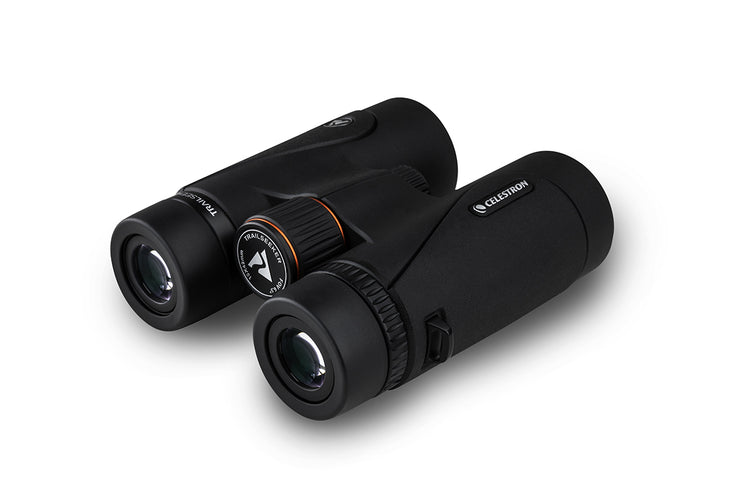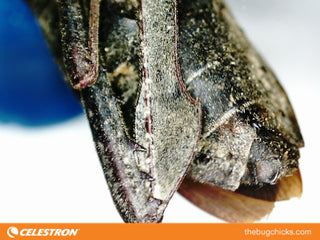Backyard Birding
April 2, 2017
Sure, we love going out on birding adventures, but sometimes you have to stick a little closer to home. Record-setting ice and snow have curtailed our birding in early 2017, but that isn’t all bad. One rainy day, I set our Hummingbird scope up in the kitchen to get some digi-scoping practice and enjoy some backyard birds.
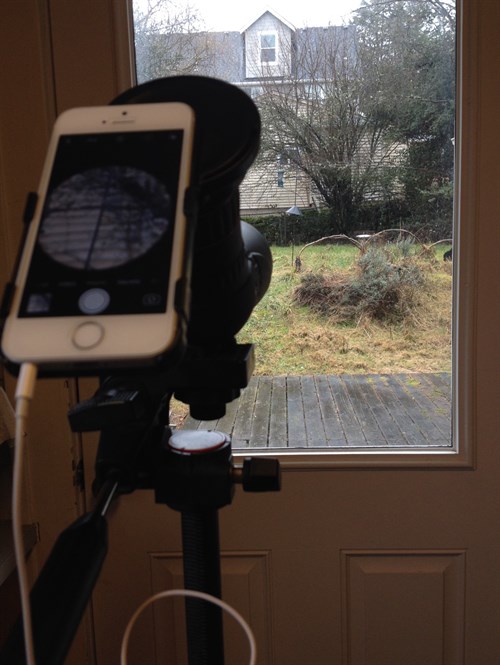
My set-up: Celestron Hummingbird ED Micro Spotting Scope 9-27x
iPhone SE
Headphones for shutter release
Celestron smartphone adapter
Tiny piece of cardboard*
Lightweight tripod
*Why a tiny piece of cardboard? Because my adapter only fits the Granite scope and I don’t like having to hold my phone up to the scope while taking photos. The cardboard allowed a tight fit. Call me MacGyver.
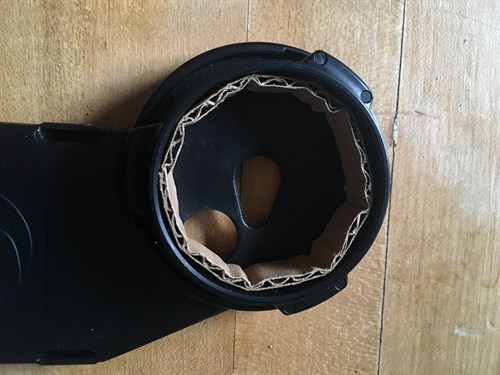
Despite the rain, I found quite a few species visiting the feeders. We feed black-oil sunflower seeds and suet, from a pole with a baffle to keep squirrels from hogging everything. The suet is very popular in the winter. We also keep a hummingbird feeder under the eaves to reduce dilution by the rain.
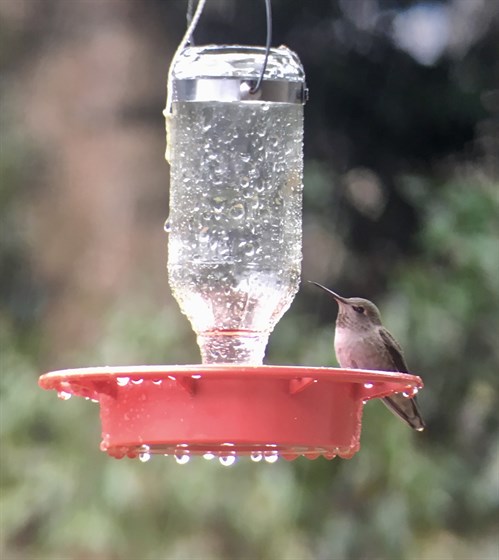 Female Anna’s Hummingbird
Female Anna’s Hummingbird
The Hummingbird scope was really in its element at this close range. The views we got of the birds were a big improvement over binoculars as far as magnification and light, and the short focal length was perfect for this distance. Getting great looks at common birds can really make you appreciate them in a new way.
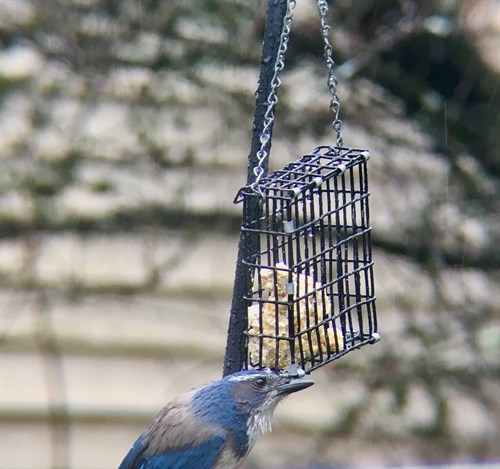 Bold California Scrub-Jays are often one of the first visitors to our feeders
Bold California Scrub-Jays are often one of the first visitors to our feeders
 Chunky Golden-crowned Sparrows often feed on the ground, but are getting the hang of the suet feeder
Chunky Golden-crowned Sparrows often feed on the ground, but are getting the hang of the suet feeder
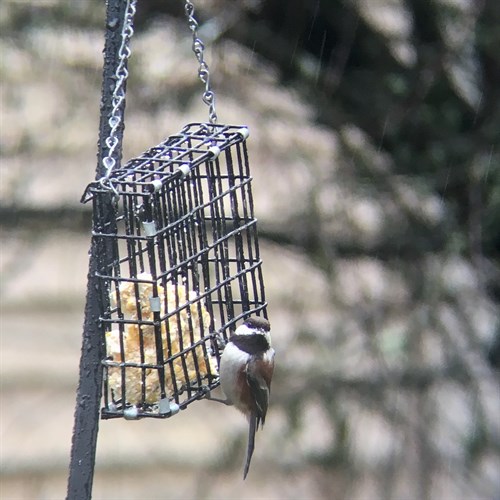
We get two chickadee species at our feeder. The Chestnut-backed is a conifer forest specialist.
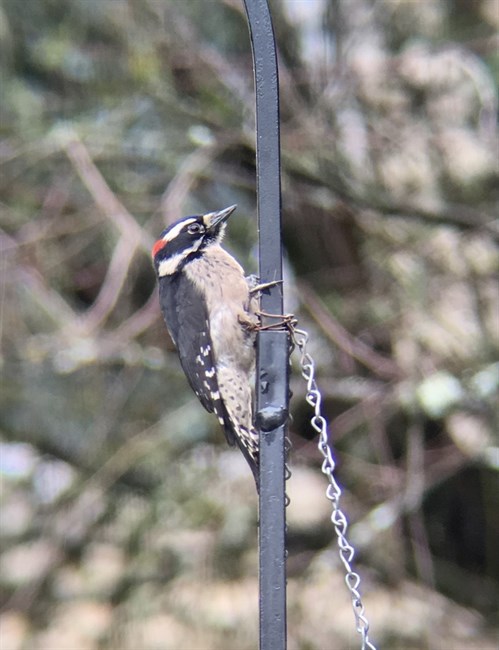 Downy Woodpeckers are the smallest woodpeckers in the US. We know that this one is a male because of the red spot on the back of its head.
Downy Woodpeckers are the smallest woodpeckers in the US. We know that this one is a male because of the red spot on the back of its head.
The next two birds are featured in our book, Must-see Birds of the Pacific Northwest (Timber Press).
Check it out for fascinating facts about these birds and where to find them.
 A pair of Red-breasted Nuthatches enjoys suet together. The male is more brightly colored and the female is hiding.
A pair of Red-breasted Nuthatches enjoys suet together. The male is more brightly colored and the female is hiding.
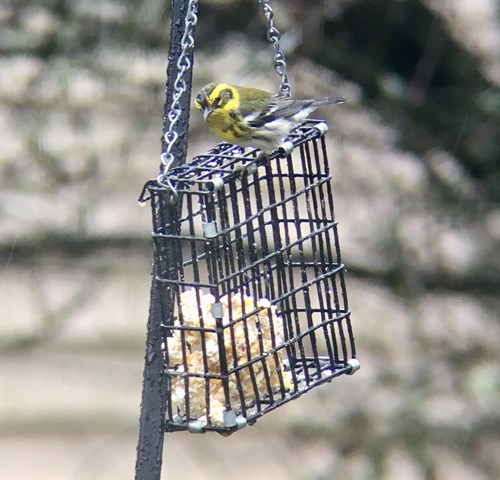 While most warbler species are gone for the winter, Townsend’s Warblers are still brightening up feeders.
While most warbler species are gone for the winter, Townsend’s Warblers are still brightening up feeders.
In addition to these birds, we get Song Sparrows, Dark-eyed Juncos, Steller’s Jays, Northern Flickers, Ruby-crowned Kinglets, Bewick’s Wrens, Varied Thrushes and more. Plenty to aim our scope out when circumstances keep us close to home.
Tips for rainy day bird photography:
- Wash the window. Seems obvious, but I only remembered partway through.
- Get as close to the window as possible, to minimize glare.
- Use an adapter to attach phone to scope to keep your hands free and for better focus.
- Twist eye-relief all the way out before attaching phone.
- Use a timer or shutter release so that you don’t wiggle the phone while taking pictures.
- Max notes that having a scope set up in the kitchen makes it very hard to work from home.








